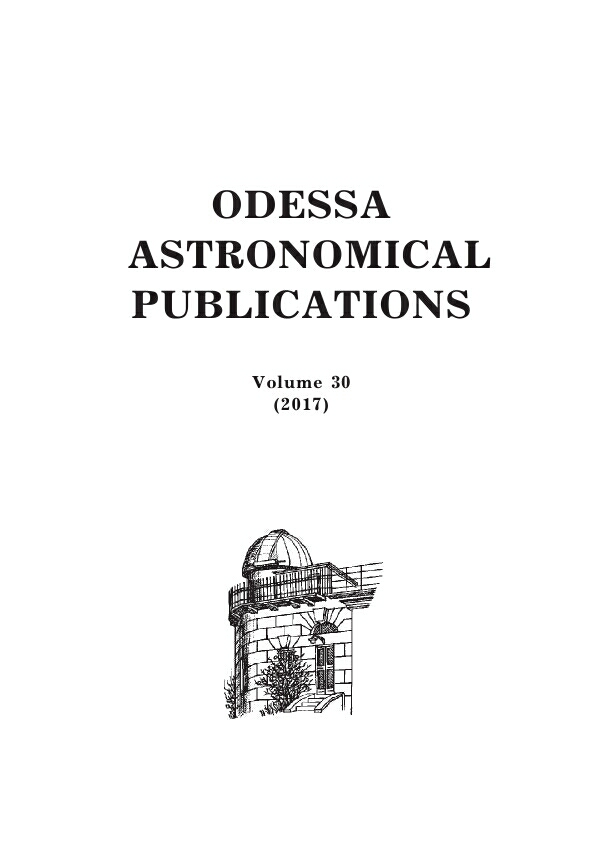ACCURACY OF SATELLITE OPTICAL OBSERVATIONS AND PRECISE ORBIT DETERMINATION
DOI:
https://doi.org/10.18524/1810-4215.2017.30.117660Ключові слова:
artificial satellite, LEO, optical observation, short-exposition observations, analysis of measuring precision, orbit estimation, Ajisai, Orekit, UMOSАнотація
The monitoring of low-orbit space objects (LEO-objects) is performed in the Astronomical Observatory of Odessa I.I. Mechnikov National University (Ukraine) for many years. Decades-long arсhives of these observations are accessible within Ukrainian network of optical observers (UMOS). In this work, we give an example of orbit determination for the satellite with the 1500-km height of orbit based on angular observations in our observatory (Int. No. 086). For estimation of the measurement accuracy and accuracy of determination and propagation of satellite position, we analyze the observations of Ajisai satellite with the well-determined orbit. This allows making justified conclusions not only about random errors of separate measurements, but also to analyze the presence of systematic errors, including external ones to the measurement process. We have shown that the accuracy of one measurement has the standard deviation about 1 arcsec across the track and 1.4 arcsec along the track and systematical shifts in measurements of one track do not exceed 0.45 arcsec. Ajisai position in the interval of the orbit fitting is predicted with accuracy better than 30 m along the orbit and better than 10 m across the orbit for any its point.Посилання
Bruinsma S., Thuillier G., Barlier F.: 2003, Journal of Atmospheric and Solar-Terrestrial Physics, 65, 1053.
CPF predictions: ftp://edc.dgfi.tum.de/pub/slr/cpf_predicts/2017/ajisai/.
EGS (Ajisai): http://global.jaxa.jp/projects/sat/egs/.
Hairer E., Norsett S., Wanner G.: 1993, Solving Ordinary Differential Equations (Springer), 528.
Holmes S., Featherstone W.: 2002, Journal of Geodesy, 76, 279.
ILRS: https://ilrs.cddis.eosdis.nasa.gov/.
Furste C., Bruinsma S., Shako R. et al.: 2011, Geophysical Research Abstracts, 13, EGU2011-3242-2.
Kaminski K., Koshkin N., Shakun L. et al.: 2017, Proc. of 7th Eur. Conf. on Space Debris, ESA/ESOC, Darmstadt, 18-21 Apr. 2017. Available at: (https://conference.sdo.esoc.esa.int/proceedings/sdc7/ paper/721/SDC7-paper721.pdf).
Koshkin N. et al.: 2017, Adv. in Space Res., 60, 1389.
Lyard F. et al.: 2006, Ocean Dynamics, 56, 394.
Orekit: https://www.orekit.org/.
Shakun L., Koshkin N.: 2014, Adv. in Space Res., 53, 1834.
Shulga A.V. et al.: 2015, Space Science and Technology, 21, 3, 74.
UMOS: http://umos.mao.kiev.ua/eng/,
https://en.wikipedia.org/wiki/Ukrainian_Optical_Facilities_for_Near-Earth_Space_Surveillance_Network.
##submission.downloads##
Опубліковано
Як цитувати
Номер
Розділ
Ліцензія
Авторське право (c) 2017 Odessa Astronomical Publications

Ця робота ліцензується відповідно до Creative Commons Attribution-NonCommercial 4.0 International License.
Відповідно Закону України про авторське право і суміжні права N 3792-XII від 23 грудня 1993 року
